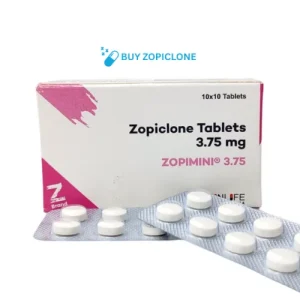What are painkillers?
Painkillers are medications used to treat pains caused by various reasons, including medical conditions, injuries, surgeries, psychological issues, and stress. These medications are known by many different terms, such as narcotics, analgesics, pain relievers, pain relief medications, pain medicine, etc.
Some painkillers are only given with a doctor’s approval, while others can be bought over the counter. Pain relief medicines come in all sorts of packaging. They are available as pills, capsules, injections, creams, gels, balms, and even skin patches.
What are painkillers used for?
Prescription painkillers and non-prescription painkillers treat different kinds of pain and inflammation.
Non-prescription painkillers
Non-prescription or over-the-counter (OTC) pain relievers ease pain caused by the following injuries or health conditions:
- Headaches
- Migraines
- Toothaches
- Bone fractures
- Dislocated joints
- Muscle pains, including neck and back strain
- Period cramps (dysmenorrhea)
- Burns, as well as sunburns
- Surgeries and nominal procedures
- Arthritis, tendonitis, and bursitis
- Ear infections and inflammation
- Skin inflammation
- Colds and flu
Prescription painkillers
These pain relief drugs have a substantial impact and are used to alleviate severe pain caused by serious health conditions, including:
- Cancer
- Fibromyalgia
- Broken bones
- Amputation
- Major surgeries
- Second and third-degree burns
- Neuropathic pain, including severe migraines and diabetes-related nerve pain
Types of pain relief treatments
Pain relief is medically obtained through four different means: prescription medication, non-prescription (OTC) medication, topical application, and physical therapy.
Types of over-the-counter (OTC) painkillers
Non-prescription or OTC pain relief medications are readily available at any pharmacy or convenience store. Any adult can purchase them without a prescription. Types of common non-prescription medications include:
- Acetaminophen:Tylenol®, Paracetamol
- Nonsteroidal anti-inflammatory drugs (NSAIDs):Aspirin, Ibuprofen, and Naproxen
- Combination medicines: Contain both acetaminophen and aspirin (an NSAID). They may also contain caffeine sometimes.
Types of prescription painkillers
Prescription pain relievers treat severe or chronic pain. They cannot be purchased without a doctor’s prescription. Types of common prescription painkillers include:
- Opioids: Morphine, Dihydromorphine, Codeine, Hydrocodone, Oxycodone, and Fentanyl
- Corticosteroids: Prednisone, Prednisolone, and Methylprednisolone
- Antidepressants: Selective serotonin reuptake inhibitors (SSRIs), Carbamazepine, and Tricyclic antidepressants
- Anti-seizure medications: Gabapentin, Pregabalin
- Muscle relaxing medications
Types of topical pain relief medications
Topical pain relievers are directly applied or sprayed on the skin. They are available in many different forms, such as gels, creams, sprays, and skin patches. Types of pain-relieving ointments include:
- Lidocaine(skin patches)
- Biofreeze(gel)
- Volini(gel)
- Diclofenac sodium(gel)
- JointFlex(cream)
- Moov(cream)
Physical therapy options for pain relief
There are therapeutic means by which pain can be relieved. These include:
- Hot packs
- Cold packs
- TENS (transcutaneous electrical nerve stimulation)
How do pain relief medications work?
Acetaminophen and NSAIDs work by inhibiting an enzyme called cyclo-oxygenase (COX). This, in turn, reduces the level of prostaglandins, the hormone-like compound responsible for pain and inflammation. Both these medications briefly block the pain receptors so that the nerves cannot carry pain signals from the muscles to the brain.
Opioids work similarly to NSAIDs and acetaminophen. They bind with opioid receptors in the brain to cut off pain signals coming from the affected body part.
Corticosteroids or just steroids numb the pain by decreasing the level of prostaglandins in the body. They also prevent the pain receptors from sending signals to the central nervous system.
Antidepressants work by changing the levels of neurotransmitters in the brain. They are usually used to treat chronic pain.
Anti-seizure medications interfere with the nerve pathway and block the pain signals from reaching the brain.
Topical medications inhibit the pathway between pain receptors in the skin and the brain. They induce a cooling or warming effect on the skin to dilate muscles and blood vessels in it.
Physical therapy treatments ease the pain by various means. TENS (transcutaneous electrical nerve stimulation) provides electrical impulses to the affected part. These impulses stop the pain receptors from alerting the brain. Hot and cold packs work by decreasing swelling and improving blood flow in the affected part. Cold packs also help to numb the skin.
Benefits of using pain relief medicines
Painkillers are a fundamental part of medicine, including psychiatry and surgery. Below are the eight most widely accepted benefits of using painkillers:
- Opioid medications increase pain endurance, which helps you to function better; physically and mentally.
- NSAIDs are usually used as the first-line treatment to ease the pain.
- Acetaminophen and NSAIDs treat headaches, fever, muscle pains, stiffness, arthritis, and severe pain in the lower back.
- Corticosteroids are known for their strong anti-inflammatory properties. They are highly effective in treating inflammation and chronic pain.
- Painkillers such as tricyclic antidepressants help improve your mental health by relieving symptoms of anxiety, stress, and depression.
- Pain relieving ointments and patches have no side effects as they are applied on the skin. They help ease your muscles and blood vessels, which improves blood flow.
- Hot and cold packs help reduce swelling and pain without any side effects. Cold packs improve skin texture, while hot packs are great for sore muscles.
- TENS provides electrical impulses that help your muscles to relax. This allows your body to relieve stress and induce an overall calming effect.
Side effects of using pain relief medication
Like any other medication, misuse of painkillers may cause certain side effects, ranging from mild to severe. Side effects due to long-term use of prescription and non-prescription painkillers are listed separately.
Side effects of non-prescription painkillers
- Liver and kidneydiseases
- Reye’s Syndrome
- Heart problems
- Stomach pain
- Peptic (stomach) ulcers
- Rashes, hives, or blisters
- Bruised skin
- Heartburn
- Drowsiness
- Fatigue
- Lightheadedness
- Chills
- Addiction
Side effects of prescription painkillers
- Constipation
- Addiction
- Increased weight
- Sleeping problems
- Fatigue
- Headaches
- Blurred vision
- Nausea
- Moodiness
- Depression
- Muscle and joint pain
- Flu-like symptoms
- Dry mouth
- Itching
- Urination issues
Severe side effects
You need to call your doctor immediately if you experience any of the following symptoms after taking any pain reliever.
- Blurred vision
- Difficulty in staying awake
- Blood in the urine (hematuria)
- Urinary tract infection (UTI)
- Difficulty in breathing
- Difficulty in swallowing
- Unclear or slurred speech
- Severe stomach issues
- Paralysis or numbness in any part of your body
Pain relief medicines and pregnancy
According to studies, taking acetaminophen during pregnancy is safer as compared to taking NSAIDs or opioids. Both NSAIDs and opioids may raise the risk of congenital disabilities in the unborn baby during the early stages of pregnancy.
Mothers require strong painkillers if they have a caesarean section (C-section) birth or hard labour and delivery. Doctors take all the conditions into account before giving pain relief medication.
Let your doctor know if you breastfeed your infant or plan to breastfeed. Non-prescription painkillers and certain opioids are safe to take while breastfeeding.
Precautionary measures to take while on pain relief medication
- Ask your doctor to prepare a Prescriber-Patient Agreement so that you and your doctor can share essential information about your medication(s).
- Ask your doctor to prescribe you naloxone to avoid an overdose.
- Devise a treatment plan with your health professional so that your progress can be tracked.
- Do not take opioid medication and alcohol together.
- Do not alter the medication doses yourself.
- Do not give your prescription medication to anyone else.
- Keep your medications away from children.
- Properly discard your unused medications, if any.
Buy the best pain relief treatments
Pain relief medications treat all kinds of pain, ranging from mild to severe. OTC painkillers such as acetaminophen treat pain and discomfort caused by health conditions like flu, headaches, muscle pains, and allergic reactions. Prescription pain relievers like opioids and antidepressants need to be approved by a health expert. It’s best to consult a healthcare professional before taking pain relief medicine, just to be on the safe side.


